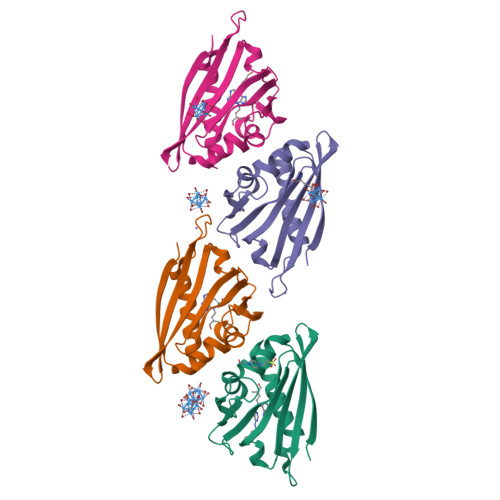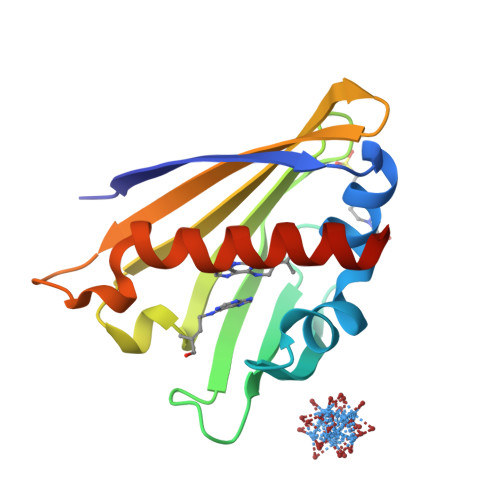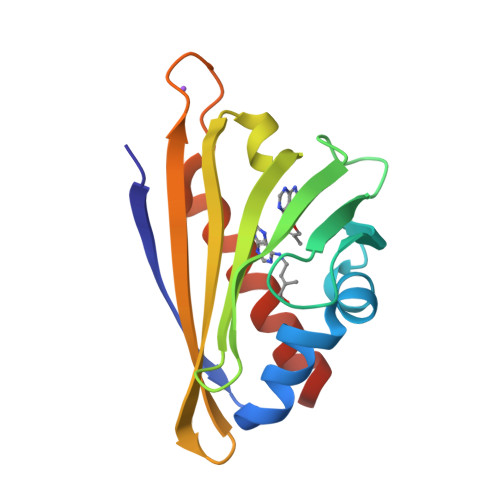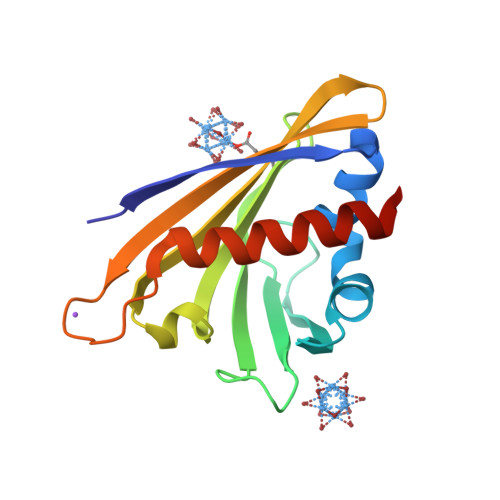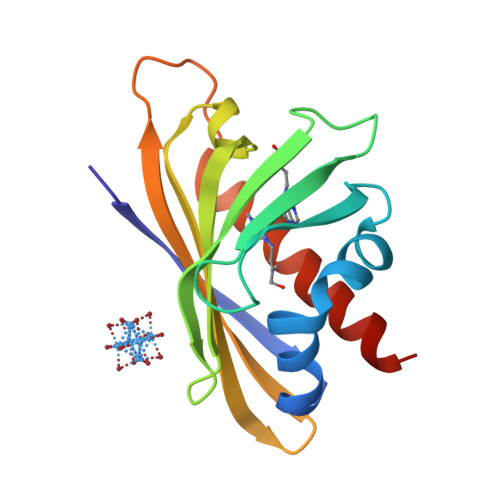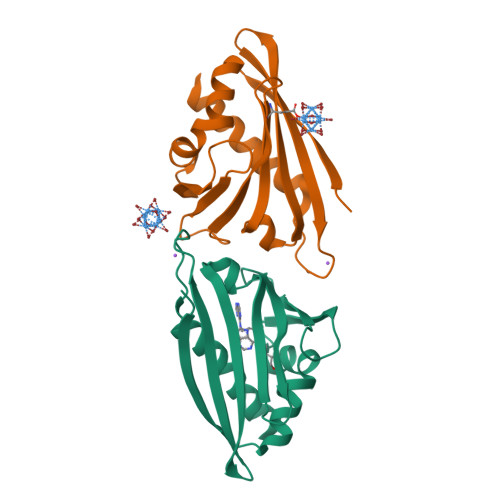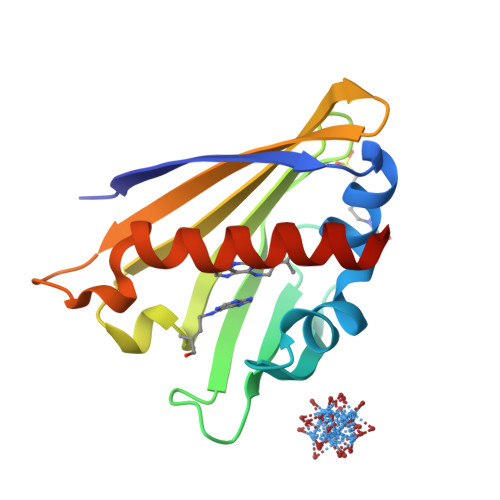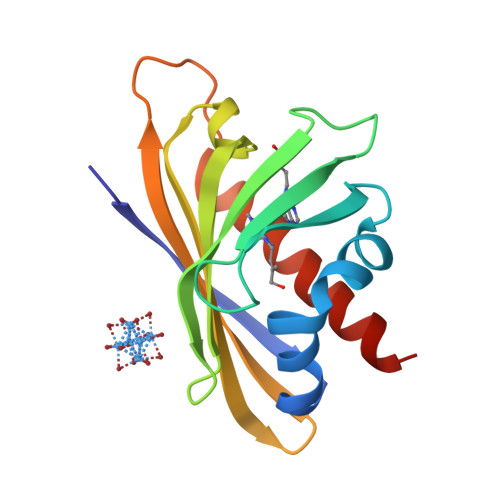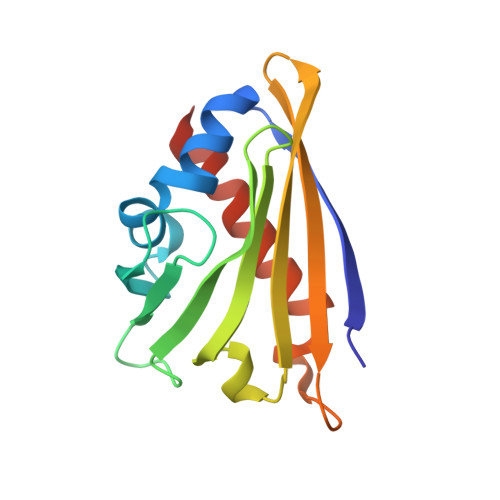MAD phasing using the (Ta(6)Br(12))(2+) cluster: a retrospective study
Pasternak, O., Bujacz, A., Biesiadka, J., Bujacz, G., Sikorski, M., Jaskolski, M.(2008) Acta Crystallogr D Biol Crystallogr 64: 595-606
- PubMed: 18453695
- DOI: https://doi.org/10.1107/S0907444908007853
- Primary Citation of Related Structures:
3C0V - PubMed Abstract:
The crystal structure of cytokinin-specific binding protein (CSBP) containing four independent molecules with 4 x 155 = 620 residues in the asymmetric unit of the P6(4) unit cell has been solved by three-wavelength MAD using 1.8 angstroms resolution data recorded from a crystal derivatized with the dodecabromohexatantalum cation (Ta6Br12)2+. The diffraction data contained a very strong anomalous signal (allowing successful phasing even using peak SAD data alone) despite the fact that the five (Ta6Br12)2+ clusters found in the asymmetric unit have low occupancy (about 0.3). The derivative structure has been successfully refined to R = 0.158, providing interesting details on the geometry of the (Ta6Br12)2+ cluster, its interactions with the protein and on the backsoaking of a cytokinin ligand that was originally part of a CSBP-cytokinin complex in the native crystals used for (Ta6Br12)2+ derivatization. A simulation analysis of the phasing power of the (Ta6Br12)2+ ions at artificially imposed resolution limits shows that it is not possible to resolve the individual Ta atoms if the dmin limit of the data is higher than 2.9 angstroms. Additionally, for successful Ta identification the (Ta6Br12)2+ complex should be specifically bound and ordered. Good binding at the protein surface is facilitated by the presence of acidic groups, indicating higher pH buffer conditions to be preferable. In addition, the water channels in the crystal should be sufficiently wide (at least 11 angstroms) to allow free diffusion of the (Ta6Br12)2+ ions on soaking. A retrospective look at the initial molecular-replacement calculations provides interesting insights into how the peculiar packing mode and strong bias of the molecular-replacement-phased electron-density maps had hindered successful solution of the structure by this method.
Organizational Affiliation:
Institute of Bioorganic Chemistry, Polish Academy of Sciences, Poznan, Poland.








